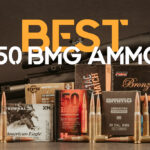
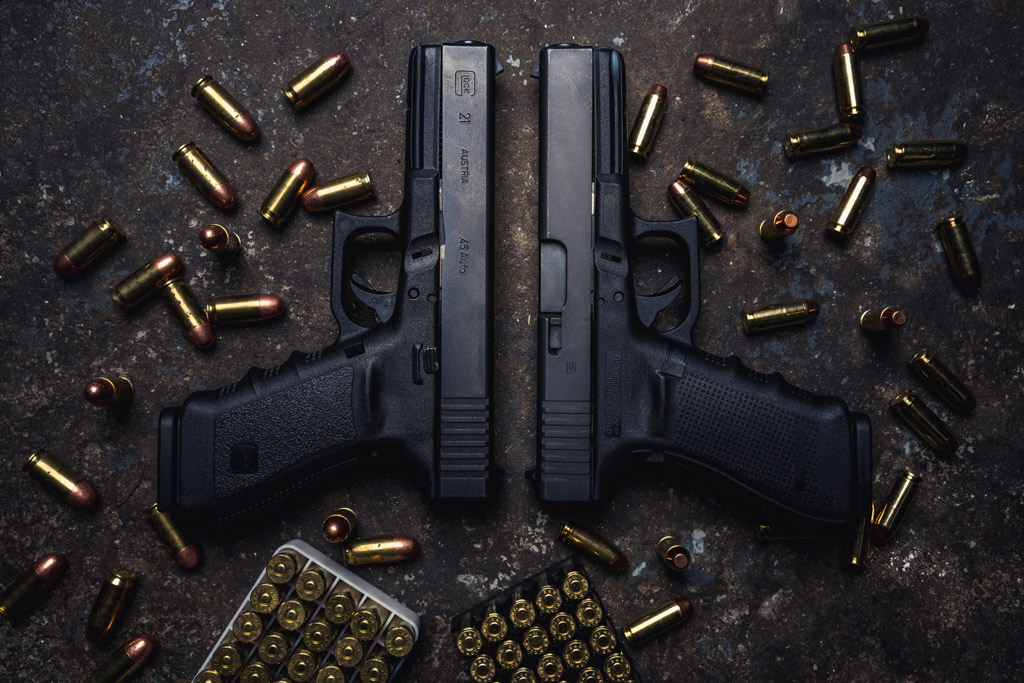
For a lot of firearms owners out there, even experienced ones, the choice of a handgun caliber can be a difficult one. If you’ve already decided a big-bore cartridge is right for you, stopping power is going to be a key factor. The difficulty in choosing between two similar calibers comes down to their intended purpose and performance. To help you pick the best big-bore round for you, we’re going to walk you through two excellent options, the 45 ACP VS 10mm.
In this article, we’ll explore the history of each round so you understand the context in which they were developed and used. From there, we’ll list some data on the ballistics and performance of each round that will help narrow down your choices. Finally, we’ll discuss some pros and cons of each, before we offer what we think is the most practical choice.
The goal is to provide you with unbiased information to make the most educated decision.
45 ACP History
The legendary firearms designer John Moses Browning developed the 45 Automatic Colt Pistol (45 ACP) in 1904. He intended it to replace the .38 caliber rounds the United States found lackluster in the Philippines and other conflicts around the turn of the century.
The new round was developed to work best in Colt’s new semi-automatic designs, most specifically the 1911 pistol, which, adopted in that year, still sees wide popularity today. A typical 230 grain full-metal-jacket round has been standard carry for military, police, and civilians around the world for over a century. Love it or hate it, 45 ACP has not only stopping power, but historical staying power as well.
10mm History
Comparatively, the 10mm Automatic is the newcomer on the block. Jeff Cooper designed and released it nearly concurrently with handguns for the new caliber in 1983. A quick note on naming: the 10mm auto was also referred to as the .40 Super, but that name fell out of use quickly, because that name is also used by another, noninterchangeable round.
The 10mm automatic hit the market with the Bren Ten pistol, an all-metal duty gun that claimed to take advantage of about a century of learning since 1911. The design was meant to truly innovate on tactical pistol design while maintaining the stopping power that some folks love from the 45 ACP. Unfortunately, it was not well received by the consumer market.
45ACP VS 10MM: Power and Ballistics
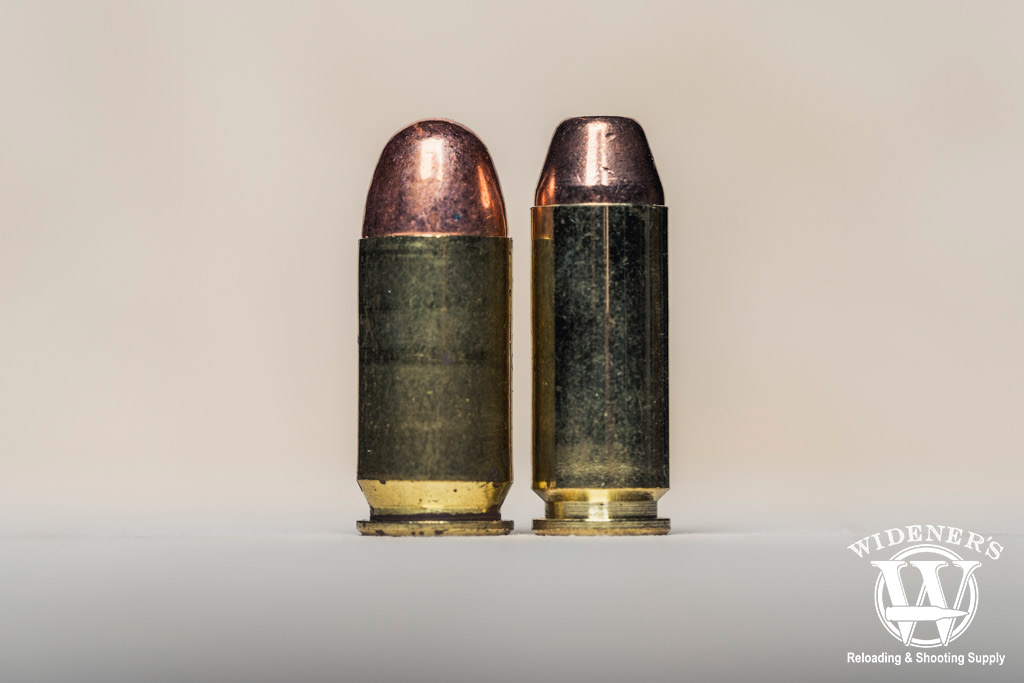
The .45 ACP (Left) is larger in diameter and overall length in most cases. The 10mm (Right) has a longer case length and a greater max pressure.
Here’s some data comparing the two big-bore cartridges. Take a look at the charts first, then we’ll interpret the results for you below:
| Bullet Diameter | Base Diameter | Case Length | Overall Length | Max Bullet Weight | Max Pressure | |
|---|---|---|---|---|---|---|
| 45 ACP Ammo | .452″ /11.5mm | 0.476″ | 0.898″ | 1.275″ | 300gr | 21,000 psi |
| 10mm Ammo | .400″ /10mm | 0.425″ | 0.992″ | 1.26″ | 230gr | 37,500 psi |
You can see when comparing the 45 ACP VS 10mm there are several key differences. The 45 ACP is a larger cartridge in diameter and overall length (depending on the bullet type). The average bullet weight for the 10mm is 180gr, while the average for the 45 ACP is 230gr. The 45 ACP can handle bullet weight up to 300gr making it an attractive option for self-defense.
Which caliber has more power? That honor goes to the 10mm cartridge, whose muzzle velocity and energy can reach levels the 45 ACP cartridge can only dream about. This added velocity gives the 10mm bullet more kinetic energy and a flatter trajectory, giving it the advantage for hitting targets at a distance. Hunters looking for a hard-hitting magnum handgun load would do well to choose the 10mm cartridge.
The 10mm has more versatility, it can be loaded light for the range or hot for hunting in thick brush. 45 ACP can also take added pressure, hollow-point +P loads are a popular choice in the self-defense ammo category. Let’s take a look at some common ammo options for both calibers below.
| Bullet Weight | Muzzle Velocity (FPS) | Muzzle Energy (Ft Lbs) | |
| 45 ACP Speer Gold Dot JHP +P | 200gr | 1080 |
518 |
| 45 ACP Federal AE FMJ | 230gr | 890 |
404 |
| 10mm Winchester JHP | 175gr | 1290 | 649 |
| 10mm Federal Premium FMJ | 180gr | 1200 | 575 |
Best Self-Defensive Ammo Option
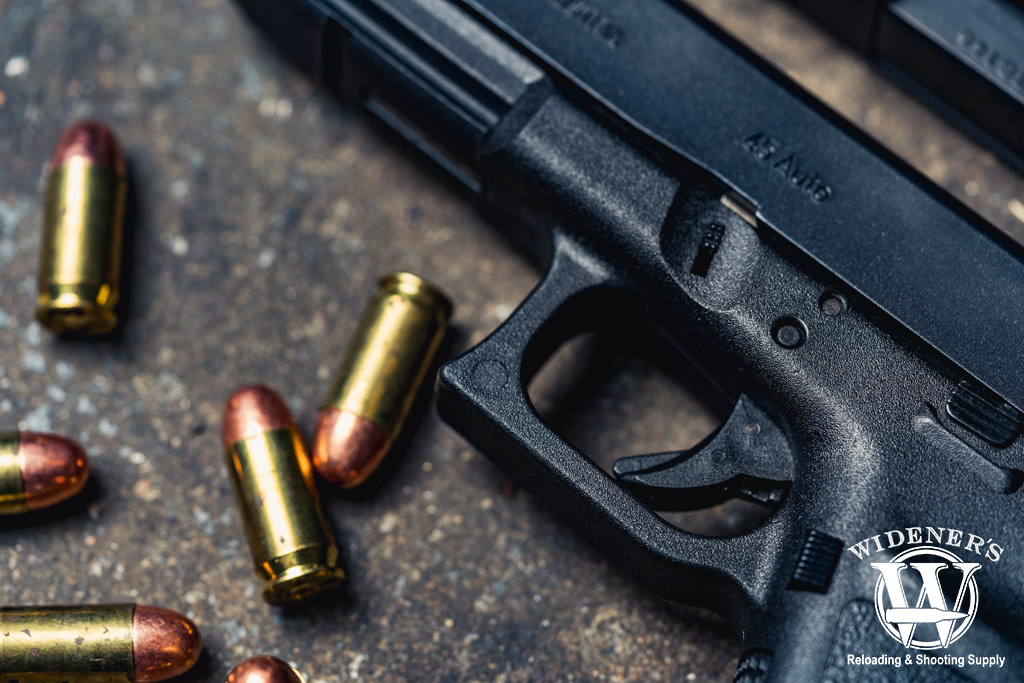
Depending on the size and weight of your gun, recoil can make be a deal-breaker when choosing a big-bore caliber.
As you can see from the data, both calibers are more than capable of use for self-defense. In terms of energy, the 45 ACP is slightly behind the 10mm, but it set the industry standard with decades of ballistics data to back it up. There’s a reason the police and military put their faith in its big-bore performance.
What really separates these two big bore calibers is recoil performance. Our old friend Isaac Newton reminds us: all of the energy going forward, also goes backward. That is to say, an especially hot 10mm load will give you more muzzle rise than a 45 ACP +P defensive load.
In a defensive situation, the speed of your follow-up shot can be critical. Controlling recoil is something that even experienced shooters have to practice at, the 10mm produces recoil that newer shooters may be averse to.
In the grand scheme of handgun calibers, the defensive performance of both of these rounds at close range will be comparable. The differences in performance in eliminating a threat will be small when compared to other factors. What matters most is discovering which option you’re most comfortable with shooting and how accurate you are in stressful situations. No matter which caliber you choose, you’re going to need to spend time at the range training with it to be proficient.
45 ACP VS 10mm Ammo Compared
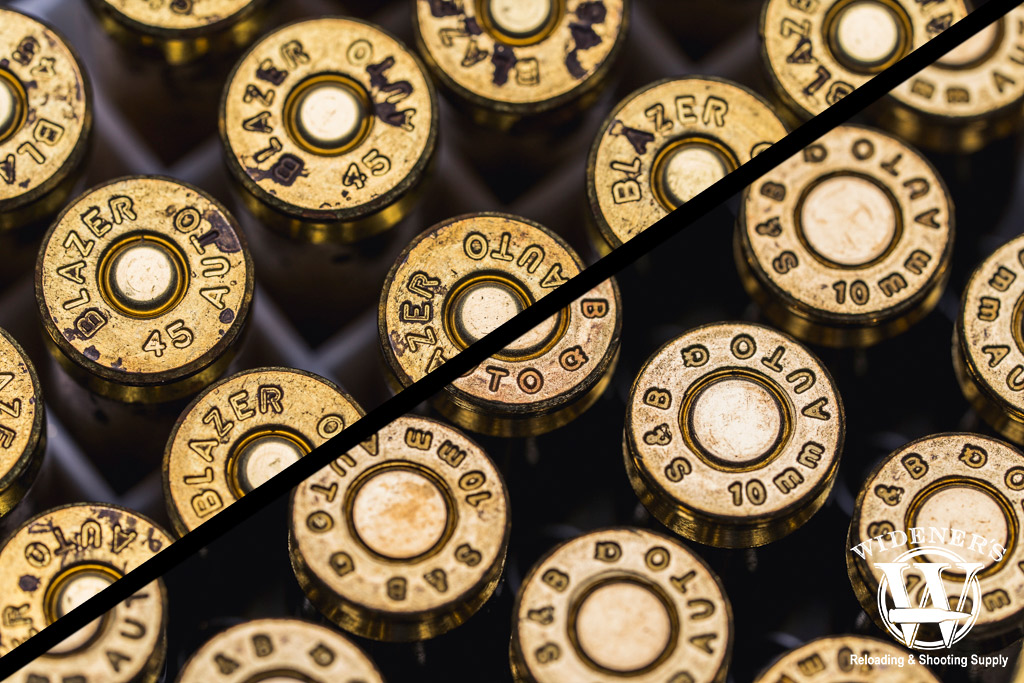
Both calibers have their strengths and weaknesses, so which one is right for you?
45 ACP Strengths and Weaknesses
- Availability: Under normal circumstances, it’s on the shelves of every gun store.
- Ammunition Variety: More bullet types available.
- Stopping Power: Decades of ballistic data prove that it is a formidable defensive round.
- More Options: More handgun and accessory options available.
- More Cost-Effective: It’s not cheap, but it’s cheaper than 10mm.
Not So Good For:
- Slower Velocity: Newer rounds, like the 9mm, 10mm, or 5.7mm shoot faster, and thus flatter.
- Magazine Capacity: 7-8 rounds in a standard size magazine is low by modern standards.
- Recoil: It’s a big-bore caliber, shooting it in compact carry guns can be unpleasant.
10mm Strengths and Weaknesses
- Innovative Design: Magnum power with a flat bullet trajectory.
- Muzzle Velocity: Almost 1.5X more power than the 45 ACP cartridge
- Self-Defense: Lots of target damage, but be aware of over-penetration risks at close range.
- Backpacking/Hunting: A full-size handgun or 10mm carbine makes a good backpacking gun for the wilderness.
Not So Good For:
- Availability: Fewer handgun and ammo options on the market.
- Affordability: It’s made in smaller numbers than 45 ACP, which means higher costs.
- Recoil: The added muzzle velocity means more recoil for the shooter.
Declaring A Winner
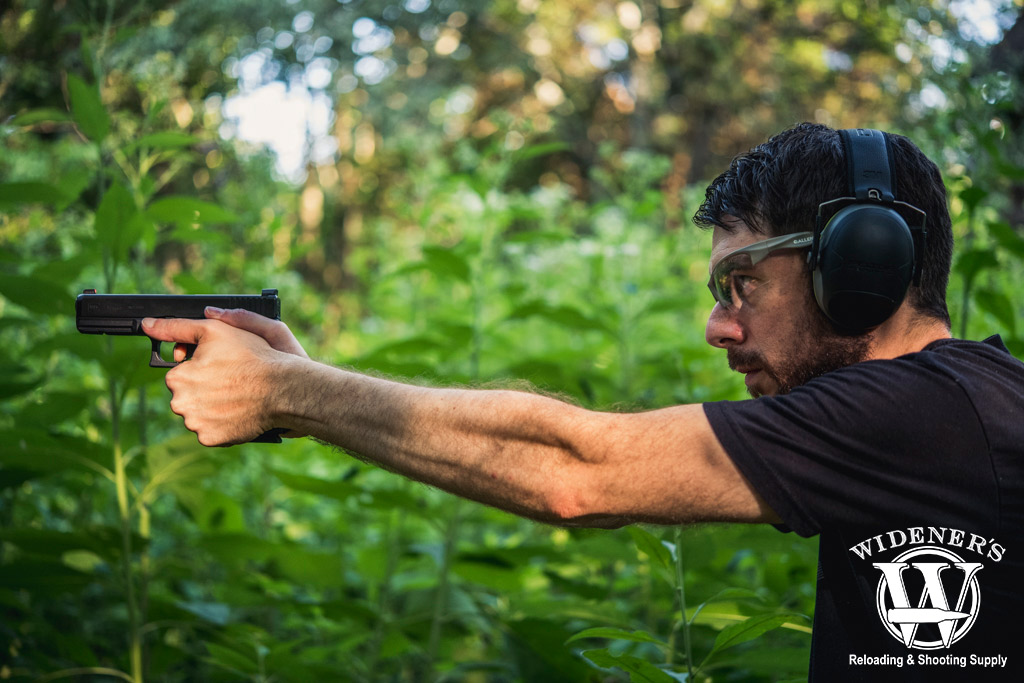
If you’re choosing a caliber primarily for self-defense, we’d recommend the tried and true .45 ACP.
Both calibers are excellent defensive options with similar ballistic performance. If you already own a firearm chambered in one, or the other, buying another gun to try the other out may not be worth your time and money. If you live close to a gun range that does rentals, by all means, try 45 ACP VS 10mm out before making a buying decision. You may find that you shoot one option much better than the other while on the range.
If you want the most practical self-defense option, with the most ammunition types, accessories, and availability, we recommend the 45 ACP. There are more 1911-style pistols available on the market than you can shake a stick at. While both calibers can also be found in modern semi-auto designs from companies like Glock and Springfield, you’ll find the 45 ACP versions to be more affordable on average than their 10mm cousins.
It’s almost too close to call, the 10mm is an excellent round that might perform a bit better in certain situations. But, being able to buy the guns and ammo more readily, and often at a lower cost, is the deciding factor here. Spending less money per-round fired means more time spent at the range in training. It’s that additional training that we believe will make a better defensive shooter, regardless of the caliber you choose.


